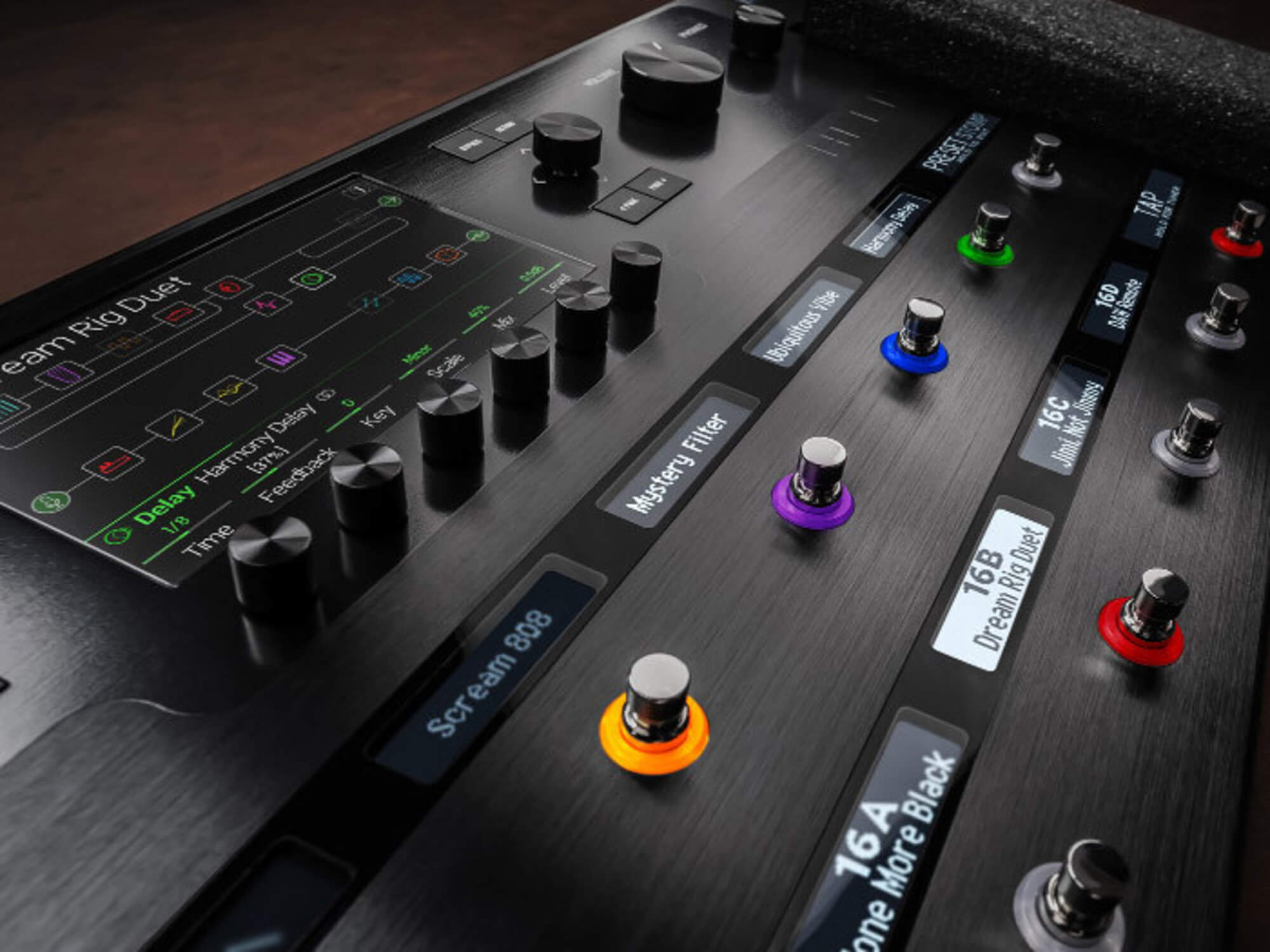Related Tags
“We should spend time creating sounds that haven’t already been around for 100 years”: Line 6 Helix designer on the future of amp modelling
Chief Product Design Architect Eric Klein says amp modelling should lean more into exploring new sounds rather than replicating old ones.

Image: Line 6
Digital amp modellers might be all the rage these days, but what is the future of amp modelling, and where would Line 6 — one of the technology’s leading pioneers — like to see it headed?
In a new interview, Yamaha Guitar Group Sound Design Manager Ben Adrian and Chief Product Design Architect Eric Klein share their insights on the technology that has for so long divided the guitar community.
- READ MORE: Line 6’s new POD Express Guitar and Bass offer a wealth of effects in ultra-portable units
Klein, for one, hopes that the future of amp modelling can be about exploring new sounds rather than replicating old ones: “I would love it if we could spend the time creating sounds that haven’t been around for 100 years,” he says [via Worship Tutorials]. “Where we were allowed to push the boundaries in a very simple way and make cool things that nobody’s ever heard before.”
Citing original Line 6 amps like the Cartographer and Ventoux (in the Helix), Klein argues that those models “sound so good because you don’t have to put the bad stuff in to make it accurate.”
“The benefit is they don’t have to do all the extra work to get all the weird swirly nuances of the amps that may not make them sound better – it just makes them sound accurate – so they can focus only on making them sound awesome,” Klein explains. “And as we expand on these tools the sound design guys they’re able to go in and make cool things that couldn’t exist in the real world, at all.”
Meanwhile, Adrian notes how there’s now a growing number of players who are using their amp as a “creative sonic sculpture tool”.
Young players in particular – many of whom have never used a classic amp – “some of them have lived almost entirely in a world of modelling now,” says Adrain. “An amp is not the thing that makes the audience hear your guitar. The amp is the last thing in your signal chain that gives you your creative voice and so I kind of see modelling as like, ‘here is a thing that makes your guitar sound like what you really want to sound like.’”
“Also in the world of modelling you don’t have to put the amp last, you can put the amp before and you can process it. Distortion, pitch-shifted sounds a lot different than a Pitch Shifter into Distortion and so the modelling kind of creates a way to make the guitar and the sound of the guitar be your own voice.”
“If you think of it like that and you don’t think of it as a replication of something from the RCA radio designers tube manual book, you can push the boundaries of what you do and that’s super fun and exciting to me.”
As for the future of Line 6, Klein says that it all boils down to several key points: “How do you incentivise musicians to create new and interesting sounds that haven’t been heard before versus trying to chase [sounds from] decades ago? How do you incentivise them to play more? How do you incentivise them to play out more to inspire other musicians? How do you get more people to play guitar because fewer people are playing guitar and so these are things we see written on the wall that we are trying to solve.”
